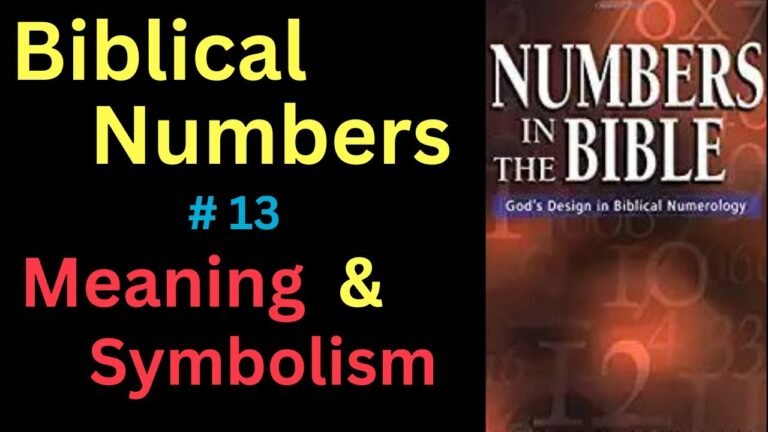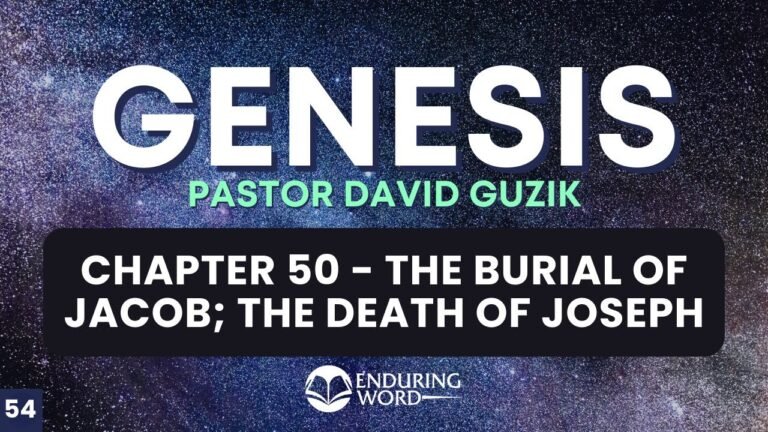The Biblical Significance of the Pillar of Salt
In the Bible, the story of Lot’s wife, who famously transformed into a pillar of salt, serves as a powerful cautionary tale. This dramatic moment, steeped in symbolism and moral lessons, highlights themes of obedience, regret, and the consequences of looking back. As we explore the significance of the pillar of salt in biblical narratives, we uncover deeper meanings that resonate through generations, inviting reflection on faith, choices, and the path forward.
What is the significance of a pillar of salt in the Bible?
In the Biblical narrative, the transformation of Lot’s wife into a pillar of salt serves as a powerful symbol of disobedience and longing for a past life. Her act of looking back at the cities of Sodom and Gomorrah, despite the angels’ clear warning to flee without turning back, illustrates a deep-seated attachment to a life filled with sin and moral decay. This moment of hesitation not only signifies her lack of faith but also highlights the consequences of longing for what is forbidden.
Jewish commentaries further explore this theme, suggesting that Lot’s wife’s fate reflects her unworthiness for salvation. By turning back, she embodies a betrayal of the divine directive, revealing her internal struggle between the allure of her former life and the call to a new beginning. Her transformation into salt serves as a poignant reminder of the dangers of clinging to the past and the importance of unwavering faith in the face of divine instruction.
In which part of the Bible is the pillar of salt mentioned?
In the biblical narrative of Genesis, the story of Lot and his family serves as a powerful lesson on obedience and the consequences of looking back. As they flee the impending destruction of Sodom and Gomorrah, God explicitly instructs them not to look back at the cities engulfed in divine judgment. This command emphasizes the importance of faith and forward focus, urging them to leave the sinful past behind.
Despite the clear warning, Lot’s wife succumbs to curiosity and glances back at the devastation. This act of disobedience leads to her tragic transformation into a pillar of salt, a poignant symbol of the consequences that can arise from defiance. Her fate serves as a stark reminder of the dangers of nostalgia and the importance of adhering to divine guidance in the face of temptation.
The story encapsulates a broader theme found throughout the Bible: the call to trust in God’s plan and move forward without hesitation. Lot’s wife’s transformation into salt illustrates the peril of longing for what is left behind, urging believers to embrace the future rather than dwell on the past. Through this narrative, the text challenges readers to reflect on their own lives and the importance of heeding divine warnings.
What is the significance of salt in the Bible?
In the Bible, salt emerges as a powerful symbol, embodying qualities that resonate deeply with the human experience. It stands for permanence and loyalty, reflecting the enduring nature of faith and commitment. Furthermore, salt signifies durability and fidelity, reminding believers of the steadfastness required in their spiritual journeys.
Beyond these attributes, salt also conveys a sense of usefulness and value, underscoring its essential role in both physical nourishment and spiritual growth. Additionally, the idea of purification is intricately linked to salt, illustrating the transformative power of faith in cleansing and refining the heart. Through these multifaceted representations, salt enriches biblical teachings, inviting deeper reflection on its significance in the lives of believers.
Lessons from Lot’s Wife: A Reminder of Obedience
In the tale of Lot’s wife, we find a poignant reminder of the consequences of disobedience. As she turned back to gaze upon the burning city of Sodom, her moment of hesitation transformed her into a pillar of salt, symbolizing the peril of longing for a life left behind. This narrative serves as a powerful lesson about the importance of heeding divine warnings and the dangers of clinging to our past, even when it is fraught with peril.
The story urges us to reflect on our own lives and the choices we make when faced with change. Just as Lot’s wife looked back, we often find ourselves yearning for familiarity, even when it no longer serves us. This longing can hinder our progress and lead us away from the path intended for us. Embracing obedience means trusting in a greater plan, allowing us to move forward with courage and faith, rather than being anchored by regret.
Ultimately, the lesson from Lot’s wife challenges us to prioritize our future over our past. It reminds us that obedience is not merely about following rules but about recognizing the value of direction and purpose in our lives. By letting go of what holds us back and embracing the journey ahead, we can avoid the fate of becoming stagnant, choosing instead to thrive in the opportunities that await us.
The Symbol of Transformation: From Life to Destruction
In the intricate dance of existence, transformation often emerges as a two-edged sword. Life, in its vibrant essence, is a continuous cycle of growth, adaptation, and renewal. Yet, this very vitality can lead to destruction when the forces of nature or human actions disrupt the delicate balance. The symbol of transformation serves as a poignant reminder that while growth may bring beauty and progress, it can also precipitate chaos and decline, highlighting the duality inherent in all living things.
As we navigate through the ebbs and flows of life, we witness myriad examples of this transformative power. A forest, lush and thriving, can succumb to flames, reducing years of growth to ashes in moments. Conversely, from that very destruction, new life can emerge, as seeds buried in the soil awaken to the sunlight once more. This cycle encapsulates the essence of change, where endings give rise to new beginnings, and the remnants of destruction become fertile ground for future growth.
Understanding this duality invites us to embrace transformation as a necessary part of our journey. It encourages us to reflect on our own experiences of loss and renewal, recognizing that destruction often paves the way for profound metamorphosis. By acknowledging the beauty that can arise from chaos, we empower ourselves to adapt and thrive, transforming our challenges into opportunities for growth and resilience in an ever-evolving world.
Salt and Sacrifice: Exploring Divine Judgment
In a world where choices shape destinies, “Salt and Sacrifice” invites players to navigate a realm steeped in divine judgment. Each decision carries weight, affecting not only the protagonist’s fate but also the lives of those around them. As players embark on this journey, they encounter a rich tapestry of characters, each representing unique facets of morality and consequence, compelling them to ponder the implications of their actions.
The game combines intricate gameplay mechanics with a hauntingly beautiful art style, creating an immersive experience that captivates from the first moment. With every challenge faced and enemy defeated, players collect resources that symbolize their sacrifices, reinforcing the theme of weighing personal gain against greater good. The environment itself acts as a reflection of the characters’ struggles, transforming with each choice made and path taken, urging players to consider the ripple effects of their journey.
As the narrative unfolds, “Salt and Sacrifice” deftly intertwines personal stories with broader themes of redemption and judgment. Players must confront their own beliefs about right and wrong, pushing them to question the nature of divinity and the price of salvation. The game ultimately serves as a poignant reminder that every sacrifice, whether small or monumental, shapes the fabric of existence, leaving an indelible mark on both the individual and the world they inhabit.
A Testament to Faith: The Pillar that Stands Still
In a world constantly in flux, faith serves as an unwavering pillar, providing strength and stability to those who seek solace. It is the enduring light that guides us through life’s storms, inspiring resilience and hope even in the darkest times. As we navigate challenges and uncertainties, faith empowers us to rise above adversity, fostering a sense of community and belonging. This steadfast belief transforms ordinary moments into profound experiences, reminding us that we are never truly alone. In embracing faith, we discover the courage to stand still amidst chaos, allowing us to reflect, grow, and emerge renewed in our purpose.
Echoes of Warning: The Lessons of a Turned Heart
In a world where the echoes of past decisions resonate loudly, the lessons learned from a turned heart serve as a powerful reminder of the fragility of human emotions. Each choice we make, often impulsively, can lead us down paths we never intended to tread. The consequences of these choices linger, shaping our relationships and influencing our futures. Understanding that our hearts can shift dramatically encourages us to tread carefully and consider the long-term impacts of our actions.
Reflecting on these lessons reveals that the journey of the heart is fraught with complexities. Moments of joy can quickly turn into regret, illuminating the importance of self-awareness and introspection. When we acknowledge the potential for change within ourselves, we become more empathetic and open to the experiences of others. This awareness allows us to navigate our interactions with greater care, fostering deeper connections that withstand the trials of time.
Ultimately, the echoes of a turned heart remind us that redemption is always possible. By embracing the lessons learned, we can transform our past mistakes into opportunities for growth. Each experience, whether painful or enlightening, equips us with the wisdom to approach life with renewed hope and understanding. In this way, we not only heal ourselves but also inspire those around us to reflect on their own journeys, forging a collective path toward compassion and resilience.
The story of Lot’s wife turning into a pillar of salt serves as a powerful reminder of the consequences of looking back and clinging to the past. This biblical narrative not only highlights themes of obedience and transformation but also invites us to reflect on our own lives. As we navigate our journeys, the lesson is clear: moving forward often requires letting go of what holds us back, lest we too become stagnant in our own narratives. Embracing change with courage can lead to a more fulfilling and purposeful existence.







